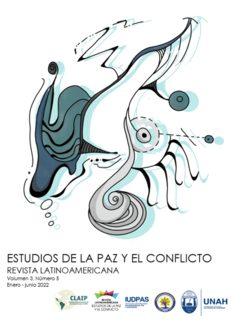Semantic networks about peace in a group of school-age children
DOI:
https://doi.org/10.5377/rlpc.v3i5.12362Keywords:
Semantic networks, peace, boys and girlsAbstract
The purpose of the article is to explore the meanings that school-age boys and girls attribute to the concept of Peace, since these meanings construct realities and impact subjectivity. The role of the educational institution is recognized as an instance of socialization that can construct a discourse and an action in relation to experiences of peace that are directed to the collective well-being. A qualitative research approach was used. 81 boys and girls between 7 and 9 years of age participated, 42 women (52%) and 39 men (48%). To collect the information, the natural semantic networks technique of Figueroa, et al (1981) was used, which has been found to be of great value for this purpose. The analysis of semantic networks provides three dimensions or semantic nuclei, peace linked to the management of emotions, as a relationship of coexistence and peace associated with relational values. It is concluded that the social network technique is useful to explore the meanings of complex words such as peace in children. On the
other hand, boys and girls think of peace as the absence of conflict, but notions such as coexistence and relational values are introduced, which is important for the development of a broader vision of peace that includes prosocial behaviors.
Downloads
845
HTLM (Español (España)) 348
XLM (Español (España)) 18
EPUB (Español (España)) 128
Downloads
Published
How to Cite
Issue
Section
License
Copyright (c) 2021 Revista Latinoamericana Estudios de la Paz y el Conflicto

This work is licensed under a Creative Commons Attribution 4.0 International License.
The journal's contents are published under a Creative Commons Attribution 4.0 license (CC BY 4.0). This license allows third parties to share (copy and redistribute the material in any medium or format) and adapt (remix, transform and create from the material for any purpose, including commercial), as long as the authorship and first publication in this journal (Revista Latinoamericana Estudios de la Paz y el Conflicto, Universidad Nacional Autónoma de Honduras - Consejo Latinoamericano de Investigación para la Paz, DOI of the work) is acknowledged, a link to the license is provided and it is indicated if changes have been made to the original. The terms of the license are available online at http://creativecommons.org.




